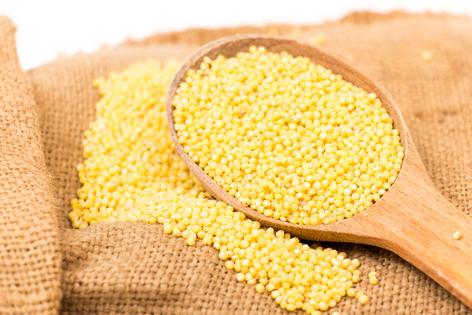Environmental Nutrition: Millet, no 'run-of-the-mill' grain
What is millet? It may not be in most kitchens, but the popularity of this grain is gaining traction.
The folklore
First cultivated about 10,000 years ago in Asia and Africa, millet became a food staple around the world. The Bible refers to it in bread making, the Romans ate it as porridge, and it was the prevalent grain in China before rice. Many cuisines include millet, such as flatbreads in India (roti and bhakri), porridge in China and Russia, and even beer in parts of Africa. Packed with nutrients, this quick-cooking grain is forging its way onto the American plate.
The facts
Millet is the generic name for over 6,000 species of grasses, but mostly refers to those of the Poaceae family, which are small seed grasses. Foxtail, finger, koda, and pearl (Pennisetum glaucum) are among the most important species of millet, which can be white, gray, yellow, or red. Millet is a tiny seed and a common ingredient in bird and animal feed. In terms of nutrients, millet is hardly for the birds. A cup of cooked millet contains 12% DV (Daily Value, based on 2,000 calories/day) each of protein and the B vitamins thiamin and niacin.
The findings
Millet is known to be rich in polyphenols, powerful health-promoting plant compounds. Kodo millet, in particular, was shown to have high levels of ferulic acid and cinnamic acid, antioxidants with antimicrobial action against harmful bacteria (Food Chemistry, 2017). Millet also shows potential for managing type 2 diabetes and its complications, including reducing fasting blood glucose, insulin, total cholesterol, LDL (bad) cholesterol, and triglyceride levels (Frontiers in Plant Science, 2016). Replacing a rice-based breakfast item with a millet-based item lowered post-meal blood glucose levels in patients with type 2 diabetes, according to one study (The Indian Journal of Medical Research, 2016).
The finer points
Readily available in health food and specialty markets and, increasingly, in mainstream grocery stores, millet is mainly sold hulled, as a whole grain, and as flour. Whether packaged or in bulk containers, be sure it's free of moisture. Sealed in an airtight container, it will keep in a cool, dark, dry place for several months. Prepare this versatile grain as you would rice and serve it with vegetables as a savory side dish, as breakfast porridge with fruit and nuts, or baked into bread or muffins. Toasting it first enhances millet's nutty flavor.
Millet with Zucchini and Chickpeas
Serves 8
Recipe adapted courtesy Oldways, oldwayspt.org
3 tablespoons extra-virgin olive oil, divided
2 medium zucchini, diced
Salt and pepper (to taste)
1 large yellow onion, diced
4 cloves garlic, minced
2 cups millet
3 cups low-sodium vegetable broth
3 cups water
1 teaspoons curry powder
1 (15-oz) can chickpeas, no salt added, rinsed and drained
3/4 cups golden raisins
1. In a medium pot, heat 1 tablespoon olive oil over medium heat. Add zucchini, salt and pepper, and saute for 4 to 5 minutes, until crisp-tender. Remove zucchini from pot and set aside.
2. To the same pot, add 2 tablespoons olive oil, the onions and garlic, and saute for 4 to 5 minutes, until soft.
3. Add millet and toast for 2 to 3 minutes, stirring.
4. Add vegetable broth, water and curry powder. Cover and bring to a boil, then simmer over low for 15 to 20 minutes. Remove from heat, let sit for 5 minutes, and fluff with a fork.
5. Add zucchini, chickpeas, and raisins.
Nutrition information per serving: 370 calories, 9 grams (g) fat,(63 g carbohydrate, 10 g protein, 9 g dietary fiber, 320 milligrams sodium
(Environmental Nutrition is the award-winning independent newsletter written by nutrition experts dedicated to providing readers up-to-date, accurate information about health and nutrition in clear, concise English. For more information, visit www.environmentalnutrition.com.)







